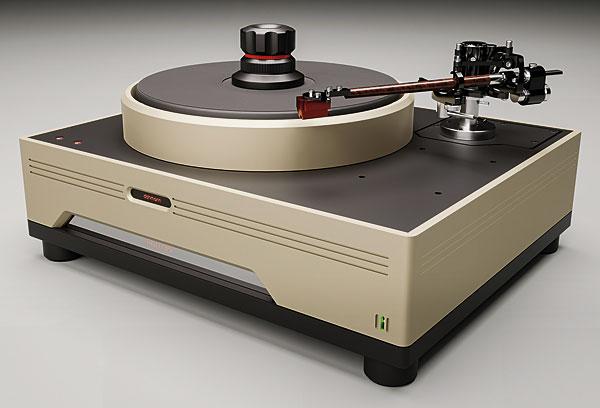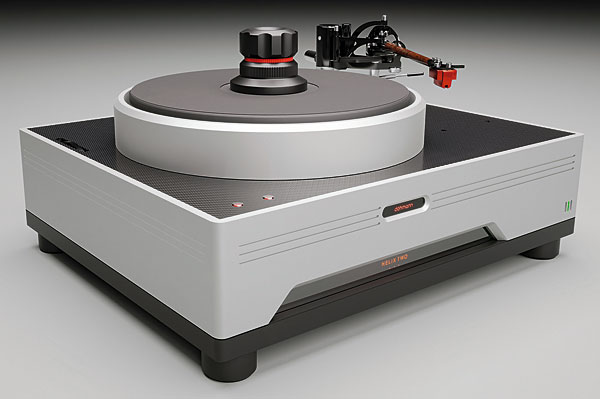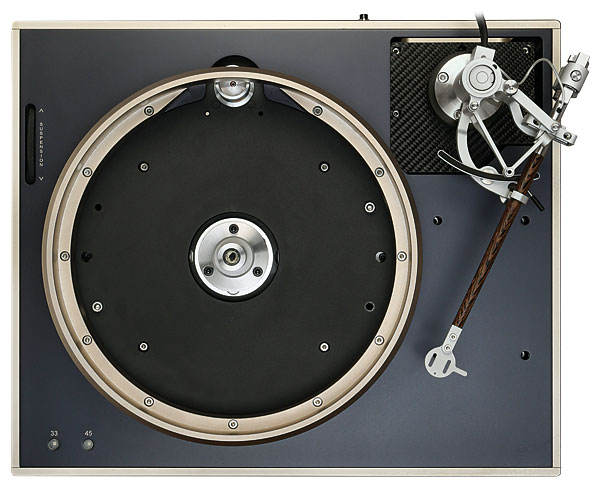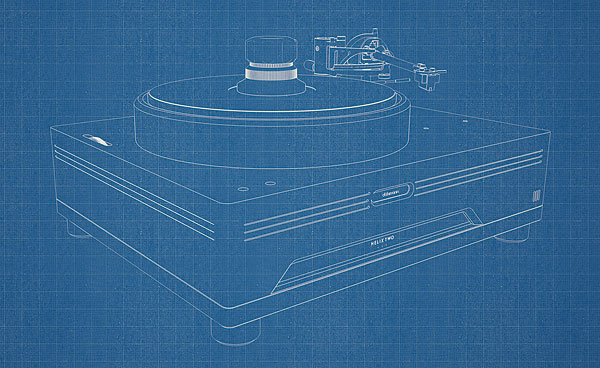Döhmann Helix Two Mk3 Turntable

 From the man behind the iconic Continuum turntable comes this next-generation range, under his own brand, incorporating a 'negative-stiffness mechanism' suspension
From the man behind the iconic Continuum turntable comes this next-generation range, under his own brand, incorporating a 'negative-stiffness mechanism' suspension
Australia is not only home to some of the world's most fascinating animals but it's also the stomping ground of high-end heavyweights Halcro [HFN May '23] and Döhmann Audio, the latter responsible for the finely-engineered, and robustly elegant, turntable that graces the pages of this month's feature review. For Mark Döhmann, Director of Design, the 'Two' – one of a pair of decks in the Helix range, now in Mk3 guise – represents his latest thinking on the art and science of vinyl replay.
All previous iterations of the Helix One and Two turntables may be updated to the current Mk3 standard, side-stepping obsolescence, while the brand's UK footprint has just received a boost with its adoption into distributor Absolute Sounds' 'Ten' artisan collection. The Helix Two is more compact than the flagship Helix One, which will accommodate two tonearms, but its more traditional proportions are arguably easier on the eye. The three colourways, matt black and silver at £46,000 or titanium (which looks like 'champagne gold') at £51,500, certainly tick all the boxes. There's a polished carbon-fibre top-plate option too.
Belt And String
The chassis metalwork and subtle red illumination are very stylish while the substantial alloy 'nest' within which the platter rotates is very reminiscent of Denon direct-drives of yore. The Helix Two Mk3 is belt-driven, of course, the two clear-polymer bands placed around the lower disc of the three-part platter during setup, before being pulled out and located around the motor pulley using a strategically-placed length of string. It's not very high-tech, but it is effective and anyone who used to own a Pink Triangle turntable in the 1980-90s will understand the ritual precisely!

Our sample was also equipped with the Lithuanian Reed 5A tonearm, an exquisite piece of engineering that deserves a full review in its own right. Its 'Double Birch/Thales' geometry, promising near-tangential/bias-free tracking across the LP's surface, is worthy of in-depth testing, and so we will return to this brand and model in the coming months...
Noise Reduction
Back to the Helix Two, where Döhmann, having previously been responsible for the design of the iconic Continuum Caliburn turntable, is now guiding this own-brand venture, already ten years in the making, and waving a clean sheet at an age-old problem. Döhmann himself puts the task very succinctly, 'Vinyl playback involves converting the vibrational energy experienced by a stylus as it moves through the grooves of a vinyl record into an electrical signal. The challenge is that there are other forms of vibrational energy (resonance) present in this environment that arise from various sources that are also picked up by the stylus'.
Döhmann's response to all this unwanted resonance is multi-faceted, employing constrained-layer damping, tuned-mass dampers and critically pre-stressed material composites. This engineering is built into and around the polymer-constrained steel plates that form the suspended subchassis, including all the interconnected parts that hold the inverted bearing, the Swiss-made, three-phase AC motor and laminated armboard.

The Helix Two's suspension is separate and acts as the 'foundation layer' of its defence against incoming vibration. It's a variation of the BM-10 'Benchtop Vibration Isolation Platform' designed by the pioneering brand Minus K from California and confers good isolation from sub-1Hz up to around 100Hz. Beyond this, Döhmann is relying on its tuned-damping and 'pre-stress accumulation (and) release' strategies to deal with extraneous noise – this is the basis of what it calls its 'mechanical crossover'. The latter – the pre-stressed elements – are particularly focused on mitigating, or at least channeling, chassis vibrations caused by motor and platter bearing noise. Frictional dissipation between the constrained layers accounts for about 20%, and the (new) polymer damping material about 80% of the impact, with the use of these lossy materials most important in dealing with the highest frequencies.
The Art Of Delegation
Among the many upgrades incorporated in the Two Mk3, this distributed approach to vibration management is extended to every part of the deck, including the bearing, motor and armboard. The alloy armboard, for example, has now been replaced by one fashioned from a lightweight, rigid fibre/polymer laminate that offers improved self-damping in a specific frequency range identified by Döhmann. The armboard is further decoupled from the subchassis via tethers, just as the motor has its own regime of vibration control.

It's all part-and-parcel of the brand's 'Resonance Suppression Architecture' (RSA). Incidentally, Döhmann is also wedded to TLAs (three letter acronyms), of which 'RSA' is just one of ten declared on the Features section of the turntable's website...
I mention this because the Mk3 version of the substantial, screw-down record clamp now also includes its own 'RSA'. The original clamp was a traditional compression type but the Mk3 includes a (Sorbothane-like) cross-linked polymer that's injected into a chamber in the top section to specifically address any spindle resonances. The lower section of the clamp, with its broad contact area, is designed to present needle chatter from travelling through the vinyl and ricocheting back out into the playback medium.
Hard Metal
The Helix's inverted bearing is a typically no-nonsense oil-lubricated hardened steel shaft running within steel bushes, the common coefficient of expansion allowing for very tight tolerances. The thrust pad is fashioned from tungsten carbide and runs on a silicon carbide ball – it'll likely outlive us all. The outer sleeve of the bearing is integrated into the lower alloy portion of the platter, maintaining a low centre of gravity, while the top portion of the platter is machined from a hard polymer and includes the spindle. The spindle and bearing are otherwise unconnected...
Incidentally, the platter surface is covered with a fibrous mat, just 0.4mm thick and impregnated with an elastomer. The material is culled from the automative racing scene where it's used to cut down on 'wheel squeal'. Again, this is another damping layer, albeit one that's apparently very difficult to cut to shape without taking the edge off every tool it encounters!
























































